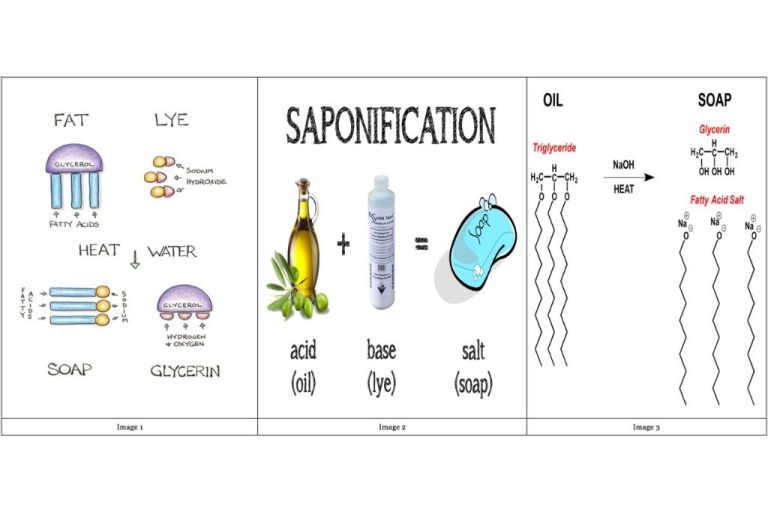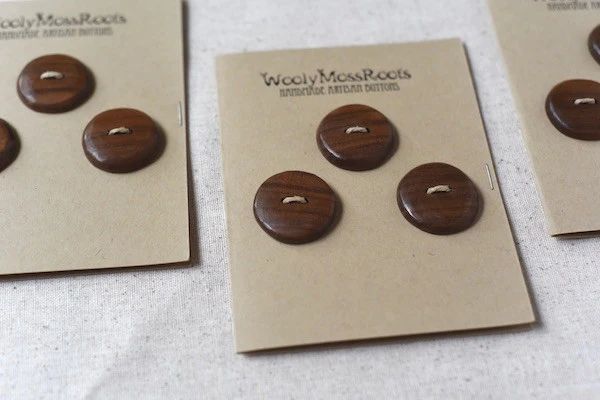Where Does Wax Go After Melting?
Wax is a common household material made up of hydrophobic organic compounds. It is solid at room temperature but melts when heated. A familiar example is wax from candles, which liquefies into a hot liquid when lit. This brings up an intriguing physics question – when wax melts, where does it go? This article will examine the composition of wax, the melting process, and investigate the fate of melted wax. We’ll consider principles of chemistry like conservation of mass and phase changes as we follow the journey of wax from solid to liquid and back again.
Composition of Wax
Wax is composed primarily of hydrocarbons, which are molecules made up of hydrogen and carbon atoms. The specific hydrocarbons that make up wax depend on the source, but they generally contain between 20 and 40 carbon atoms per molecule.
The hydrocarbons in wax are long, straight chains, which allows them to pack together closely and form solid structures at room temperature. This gives wax its solid, yet pliable characteristics. The length of the hydrocarbon chains and the types of bonds between the molecules determine the melting point and hardness of a particular wax.
In addition to hydrocarbons, wax may contain some other compounds like fatty acids and esters. But the predominant chemical structure is long hydrocarbon chains, giving wax its unique physical and chemical properties.
Melting Process
When wax is heated, it undergoes a physical change known as melting, which is the process of a solid changing into a liquid state. This occurs because heating wax provides energy to overcome the attractive intermolecular forces that hold wax molecules together in a rigid, solid structure.
The main intermolecular force in organic compounds like wax is van der Waals forces. These are relatively weak dipole-dipole attractions between molecules. When wax is solid, the molecules are locked into position and can only vibrate in place. As heat is applied, the molecules gain kinetic energy and vibrate more vigorously until they shake free of their fixed positions. When a critical temperature is reached, the molecules have enough energy to completely overcome the van der Waals forces. This allows the molecules to move freely and slide past one another, resulting in the solid wax melting into a liquid state.
The melting process occurs because the added thermal energy from heating provides the molecules enough kinetic energy to overcome the intermolecular attractions binding them in the solid state. This transition from solid to liquid illustrates how temperature and kinetic energy dictates the physical state of wax at the molecular level.
Conservation of Mass
According to the law of conservation of mass, the total mass remains constant in a closed system, regardless of changes in physical state or chemical transformations. This means that when wax melts from a solid to a liquid, its mass remains the same. The wax molecules are simply rearranging from a highly ordered solid state into a more disordered liquid state. No mass is gained or lost in this physical change.
For example, if you started with a 100g candle, after melting there would still be 100g of liquid wax. The molecules break out of their fixed positions in the solid state and are free to move around in the liquid, but you still have the same number of wax molecules. Melting a substance does not cause any mass to disappear or be destroyed. Likewise, no new mass is created. The total mass is conserved.
This conservation of mass law applies to all phase changes, not just solid to liquid. When liquid wax later cools and returns to a solid state, the mass remains 100g. The wax molecules simply return to a more structured arrangement. Under normal conditions, no mass is lost via chemical decomposition during these physical state changes.
So in summary, the law of conservation of mass explains that wax does not lose or gain mass when going from solid to liquid to solid again. The wax itself is conserved, it just takes on different physical forms. This fundamental law is important to understanding what happens on a molecular level when substances melt and freeze.
Absorption
When wax melts into its liquid state, it can soak into porous materials like candle wicks, unfinished wood, and fabrics. The liquid wax seeps into the microscopic holes and spaces within these materials, allowing it to become trapped and absorbed. For candle wicks, this absorption process is essential to fuel the burning of the wick as the candle is lit. The wax soaks up into the wick, providing a continuous supply of fuel that keeps the flame going. With unfinished wood or fabric, absorption of liquid wax can permanently stain the material by clogging up pores. Proper cleaning while the wax is still liquid is important to avoid permanent damage. But even after hardening again, wax can remain lodged deep in porous substances. The absorption process illustrates how liquid wax penetrates many common materials we use.
Evaporation
When melted wax is exposed to air, some of the liquid can evaporate. Evaporation is the process by which molecules in a liquid state gain enough energy to enter the gaseous state. For wax, the wax molecules absorb heat energy, increasing their kinetic energy. When the kinetic energy reaches a certain threshold, the wax molecules can escape the intermolecular attractive forces of the liquid wax and enter the air as a vapor. The wax vapors mix with the other gas molecules in the air.
The rate of evaporation depends on factors like temperature, air flow, and the type of wax. Higher temperatures provide more kinetic energy for the liquid wax molecules to evaporate. Increased airflow speeds evaporation by carrying away the evaporated wax vapors. Different types of waxes have different sized molecules, intermolecular forces, and vapor pressures, affecting evaporation rates. Overall, some portion of melted wax can evaporate when exposed to air, with the amount dependent on specific conditions.
Solidification
When wax melts, it transitions from a solid state to a liquid state. However, this is a reversible physical process. If the melted wax cools down sufficiently, the wax molecules can condense and transition back to a solid state. This process is known as solidification.
As the melted wax cools, the average kinetic energy of the molecules decreases. With less energy, the wax molecules move around less and are increasingly attracted to one another via intermolecular van der Waals forces. When the temperature drops below the wax’s melting point, these attractive forces overpower the molecular motion, causing the molecules to come together in an orderly lattice structure characteristic of solids.
The wax molecules arrange themselves into this fixed, rigid formation during solidification. As more molecules join the lattice, crystals begin to take shape. Given enough time to fully solidify, the wax reverts back to its original solid form. However, the wax may solidify into a different shape than the original due to the containing vessel.
The rate of solidification depends on several factors, including the wax’s composition, the temperature differential, and the surface area. Faster cooling encourages faster crystallization. The wax’s mass also plays a role, as larger pools of wax retain heat for longer. But with proper temperature conditions, the melted wax will eventually condense and harden once again.
Residues
After wax melts, some of it remains behind as a residue on surfaces. This is because wax is sticky and viscous when melted, allowing some of it to adhere to objects it comes into contact with. The amount of residue depends on the type of wax, the temperature it was melted at, and the texture of the surface it coated.
Paraffin and soy waxes tend to leave more residue compared to beeswax or candle wax, which are cleaner burning. Higher melting temperatures also increase residues. Porous, uneven, or hairy surfaces like wood, carpets, and fabrics capture more wax than smooth non-porous ones like metal or plastic.
To clean wax residues, allow any remaining wax to fully harden and then scrape off what you can with a plastic scraper or old credit card. You can freeze the wax first to harden it even more. Next, place paper towels over the wax spot and apply heat from an iron or hair dryer to absorb melted wax into the towels. For stubborn spots, use wax solvents or grease-cutting detergents. Test cleaning products first and scrub gently to avoid damaging surfaces.
Properly cleaning wax residues takes time and effort. But it’s important for aesthetics, safety, and preventing buildup. The good news is leftover wax can be reused or recycled through candle-making kits and paraffin wax reconditioning services.
Recycling Wax
With any project involving wax, there will likely be leftover material as well as waste from the used wax. Fortunately, there are ways to recycle wax so that it does not go to waste.
One of the easiest ways to reuse wax is to simply melt down any unused portions after completing your project. You can pour the melted wax into a container and save it for your next project. This recycled wax can be melted down over and over again.
You can also recycle used wax such as old candle wax. Scrape off any wick material and melt the leftover wax from used candles. Be sure to filter out any impurities. Once melted, combine into a larger container to create a recycled batch of wax for new candles or other projects.
In some cases, you may be able to return unused commercial wax to the supplier. Some manufacturers will reuse the wax in new products. Check with the manufacturer of specialty waxes, waxes for commercial use, or large volumes of wax.
If reusing the wax yourself is not an option, check for wax recycling centers in your community that will take used wax. The recycled wax can be processed and repurposed for use in various industrial applications.
With some creativity and care, you can find ways to recycle most leftover or used wax rather than letting those materials go to waste. This helps conserve resources and reduces waste being sent to landfills.
Conclusion
In summary, when wax melts it retains its mass but undergoes some changes. The melting process causes the solid wax to transition into a liquid state as the temperature rises above its melting point. While melting, some components of the wax may evaporate, but the majority of the wax remains present. It spreads out when liquid, absorbing into porous surfaces like wicks, paper, or fabric. As the wax cools and returns to a solid state, any residues remain embedded in the materials it soaked into. With proper recycling, melted wax can be reused. But in essence, melted wax does not disappear – it simply changes form. By understanding the science of phase changes and the law of conservation of mass, we can comprehend where the wax goes after it melts.




